EIGHTH EDITION
THE HUMAN SPECIES
An Introduction to Biological Anthropology
JOHN H. RELETHFORD
State University of New York
College at Oneonta
 Higher Education
Higher Education
Boston Burr Ridge, IL Dubuque, lA New York San Franoisco St. Louis Bangkok Bogota Caracas Kuaia Lumpur Lisbon London Madrid Mexico City Miian Montreai New Deihi Santiago Seoul Singapore Sydney Taipei Toronto

Higher Education
Published by McGraw-Hill, an imprint of The McGraw-Hill Companies, Inc., 1221 Avenue of the Americas, New York, NY 10020. Copyright 2010, 2008, 2005, 2003, 2000, 1997, 1994, 1990. All rights reserved. No part of this publication may be reproduced or distributed in any form or by any means, or stored in a database or retrieval system, without the prior written consent of The McGraw-Hill Companies, Inc., including, but not limited to, in any network or other electronic storage or transmission, or broadcast for distance learning.
This book is printed on acid-free paper.
1 2 3 4 5 6 7 8 9 0 CCI/CCI 0 9
ISBN: 978-0-07-353101-4
MHID: 0-07-353101-4
Editor in Chief: Michael Ryan
Sponsoring Editor: Gina Boedeker
Marketing Manager: Pam Cooper
Managing Editor: Nicole Bridge
Developmental Editor: CraigLeonard
Production Service: Macmillan Publishing Solutions
Project Manager: Lindsay Burt
Manuscript Editor: Thomas L. Briggs
Design Manager: Ashley Bedell
Cover Designer: Mary-Presley Adams
Illustrations: Parrot Graphics, Judy and John Waller
Photo Research: Jennifer Blankenship
Production Supervisor: TandraJorgensen
Composition: 10.5/12.5Legacy SerifBook by MacmillanPublishingSolutions
Printing: 45# New Era Thin, Courier, Inc.
Cover images: Multiethnic Group ofMen and Women: Digital Vision/Getty Images; DNA: Thomas Northcut/Lifesize/Getty Images; Horses on the walls of a cave: Sisse Brimberg/National Geographic/Getty Images; Skulls of Neanderthal, Homo erectus, Australopithecus, Homo sapiens, Chimpanzee skull and human skull, artifacts and hunting tools made of flint: Colin Keates/Dorling Kindersley/Getty Images
Credits: The credits section for this book begins on page C-1 and is considered an extension of the copyright page.
Library of Congress Cataloging-in-Publication Data
Relethford, John.
The human species : an introduction to biological anthropology / John H. Relethford.8th ed. p. cm.
ISBN-13: 978-0-07-353101-4 (alk. paper)
1. Physical anthropology. I. Title.
GN60.R39 2010
573-dc22 2009021382
The Internet addresses listed in the text were accurate at the time of publication. The inclusion of a Web site does not indicate an endorsement by the authors or McGraw-Hill, and McGraw-Hill does not guarantee the accuracy of the information presented at these sites.
www.mhhe.com
PREFACE
This text is an introduction to the field of biological anthropology (also known as physical anthropology), the science concerned with human biological evolution and variation. The text addresses the major questions that concern biological anthropologists: What are humans? How are we similar to and different from other animals? Where are our origins? How did we evolve? Are we still evolving? How are we different from one another? What does the future hold for the human species?
ORGANIZATION
This book is divided into four parts. Part I, Evolutionary Background, provides the basic background in genetics and evolutionary theory used throughout the remainder of the text. Chapter 1 introduces the science of biological anthropology, the nature of science, and the history of evolutionary thought. Chapter 2 reviews molecular and Mendelian genetics as applied to humans, providing genetic background for later chapters and including a basic review of cell biology for those whose high school biology is a bit rusty. Chapter 3 focuses on evolutionary forces, the mechanisms that produce evolutionary change within and between populations. Chapter 4 looks at evolution over longer periods of time, focusing on the origin of new species, and includes discussion on how species are classified.
Part II, Our Place in Nature, examines the biology and behavior of the primates, the group of mammals to which humans belong. The focus of this section is on two basic questions: What are humans? How are we related to other living creatures? Chapter 5 looks at the basic biology and behavior of mammals in general and primates in particular, and reviews the different types of living primates. Chapter 6 examines the diversity in primate behavior and ecology, and includes a number of brief case studies of different primate species. Chapter 7 looks specifically at the human species and includes a comparison of human traits with those of apes.
Part III deals with questions of Our Origins. Chapter 8 begins with a discussion of the methods of paleoanthropology and concludes with a brief history of life on earth prior to the appearance of the first primates. Chapter 9 examines the fossil and genetic evidence for primate evolution from the appearance of the primate-like mammals through the split of ape and human lines by 6 million years ago. Chapter 10 deals with the beginning of human evolution, focusing on the fossil evidence for the first hominins and the evolution of bipedalism. Chapter 11 examines the origin and biological and cultural origins of the genus Homo, including Homo habilis and Homo erectus. Chapter 12 looks at the fossil and archaeological records of archaic humansHomo heidelbergensis and the Neandertals. Chapter 13 reviews the fossil, archaeological, and genetic evidence for the origin of modern humans and includes a discussion of current controversies.
Part IV, Our Diversity, examines human biological variation in our species today from an evolutionary perspective. Chapter 14 focuses on the measurement and analysis of human variation, and contrasts evolutionary and racial approaches to human diversity. Chapter 15 reviews a number of case studies of recent human microevolution, including studies of population history and natural selection in human populations. Chapter 16 continues examining human variation from the broad perspective of human adaptation, both biological and cultural. Chapter 17 concludes the text by examining recent human evolution (over the past 12,000 years), focusing on the biological impact of agriculture and civilization, with particular emphasis on changing patterns of disease, mortality, fertility, and population growth.
The organization of this text reflects my own teaching preference in terms of topics and sequence. Not all instructors will use the same sequence of chapters; some may prefer a different arrangement of topics. I have attempted to write chapters in such a way as to accommodate such changes whenever possible. For example, although I prefer to discuss human evolution before human variation, others prefer the reverse, and the chapters have been written so that this alternative organizational structure can be used.
FEATURES
Throughout the text, I have attempted to provide new material relevant to the field and fresh treatments of traditional material. Key features include the following:
All areas of contemporary biological anthropology are covered. In addition to traditional coverage of areas such as genetics, evolutionary theory, primate behavior, and the fossil record, the text includes material on genetics and population history, human growth, epidemiology, and demography.
The relationship between biology and culture is a major focus. The biocultural framework is introduced in the first chapter and integrated throughout the text.
Next page
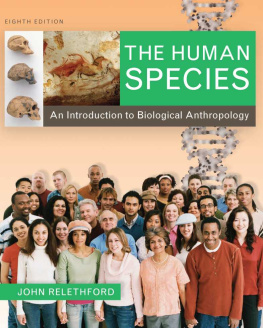

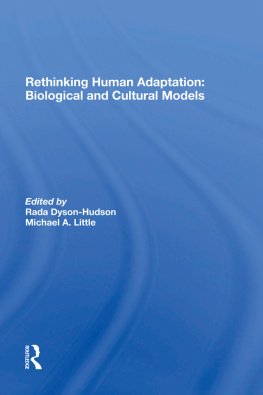
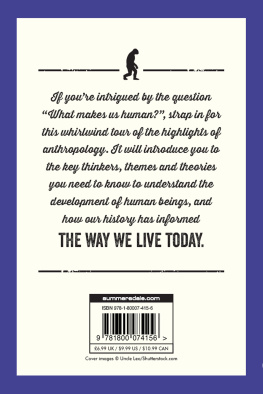
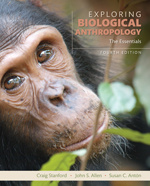
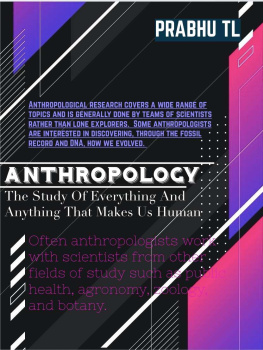
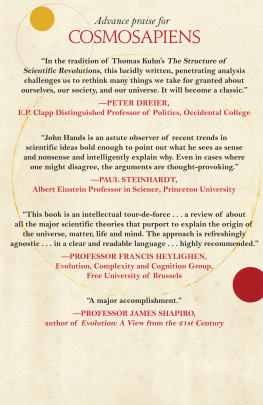
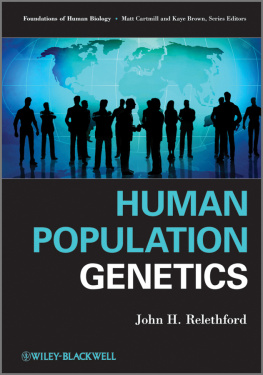

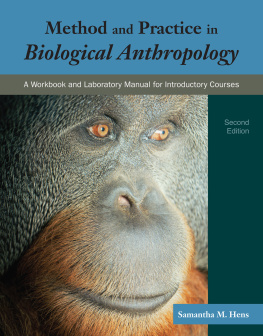

 Higher Education
Higher Education